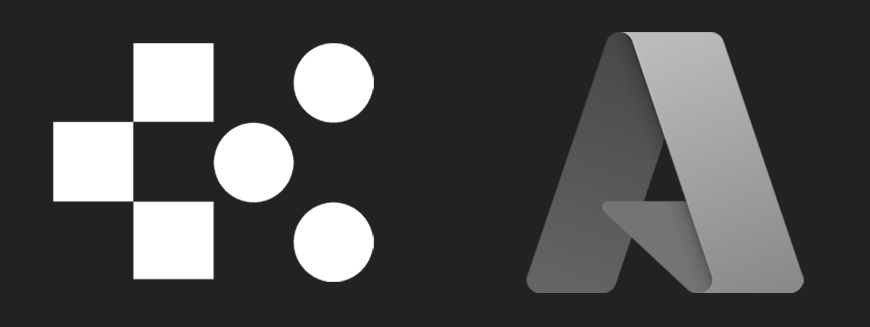Azure Cache for Redis Security Best Practices
Learn key security best practices for Azure Cache for Redis, including encryption, access control, and compliance with UK regulations.

Securing Azure Cache for Redis is critical to protecting your data and meeting UK regulations like GDPR. Here's what you need to know:
- Encryption: Use TLS 1.2 or higher for secure data in transit. Enable encryption at rest with Microsoft or customer-managed keys for added control.
- Access Control: Leverage Virtual Networks, Azure Private Link, and Network Security Groups to restrict access. Configure firewall rules to limit IP ranges.
- Authentication: Replace shared keys with Microsoft Entra ID for role-based access. Use managed identities to simplify authentication.
- Monitoring: Enable connection logs and use Azure Monitor and Microsoft Defender for Cloud to track access and detect anomalies.
- Compliance: Store data in UK regions to meet GDPR and data sovereignty requirements. Use Azure Policies to enforce security configurations.
Azure Cache for Redis Community Standup - Connect your Azure Cache for Redis with Microsoft Entra ID
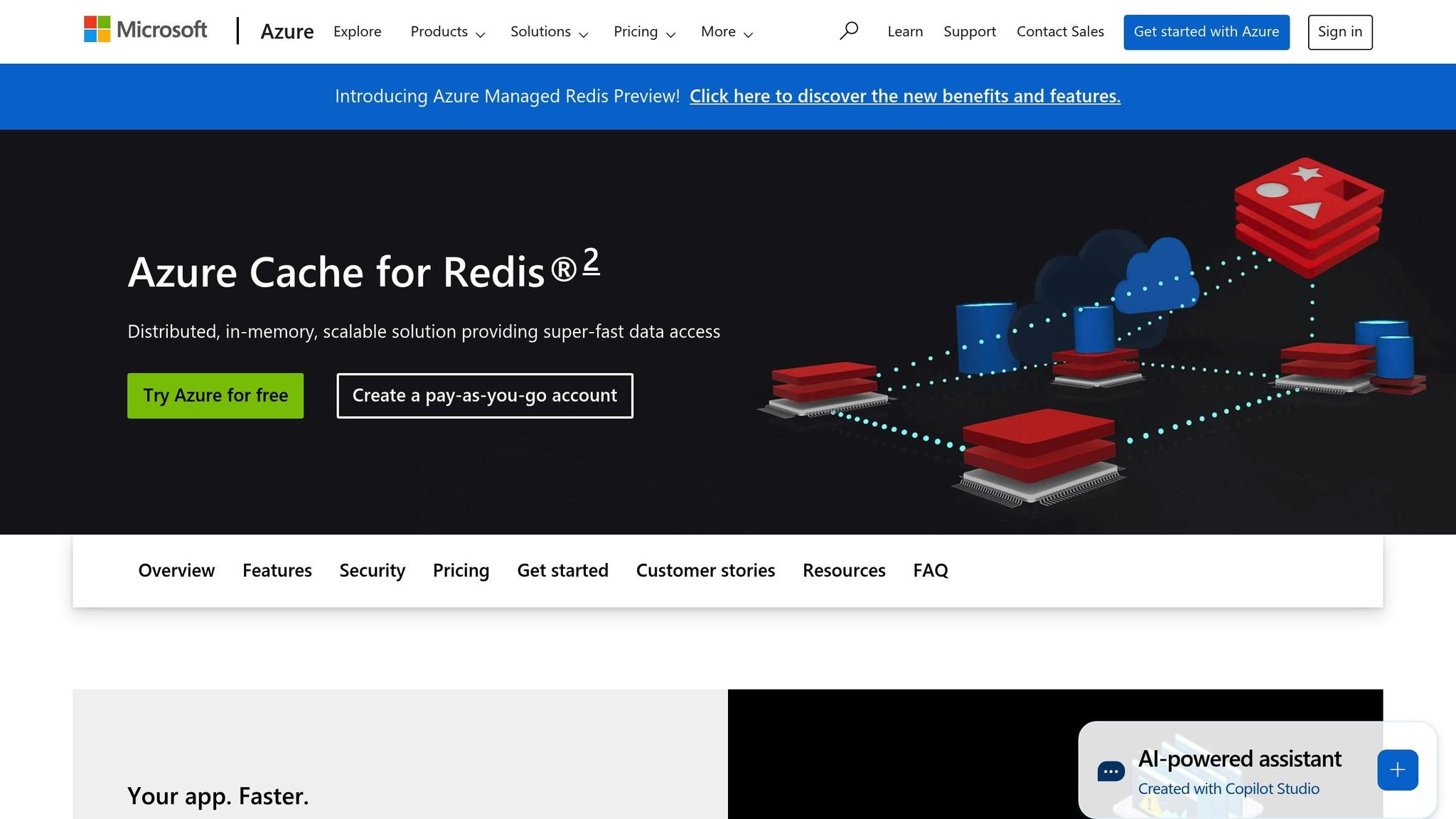
Encryption and Data Protection
Encryption is at the heart of secure data handling, and Azure Cache for Redis ensures your data is protected both during transit and while stored.
TLS Encryption for Secure Connections
Azure Cache for Redis uses TLS encryption by default for all new instances, safeguarding data as it moves between your applications and the cache. This default setup ensures that connections are secure against interception. Microsoft datacentres handle TLS connections automatically, providing authentication, privacy, and data integrity.
The platform supports TLS 1.2 and TLS 1.3 across all service tiers, from Basic to Enterprise Flash, so you can count on secure connections regardless of your subscription level.
| Tier | TLS Support |
|---|---|
| Basic, Standard, Premium | TLS 1.2 and 1.3 |
| Enterprise, Enterprise Flash | TLS 1.2 and 1.3 |
In production environments, non-SSL (unencrypted) connections are turned off by default to minimise risk. While unencrypted connections can be enabled for testing purposes, they should never be used in live settings as they expose data to potential threats.
To maintain secure communication, ensure your client applications are configured to support TLS 1.2 or higher. For added safety, set the minimum supported TLS version to 1.2 to avoid weaker encryption protocols being used accidentally.
Now, let’s explore additional features that go beyond transit encryption to protect your data.
Data Protection Features in Azure Cache for Redis
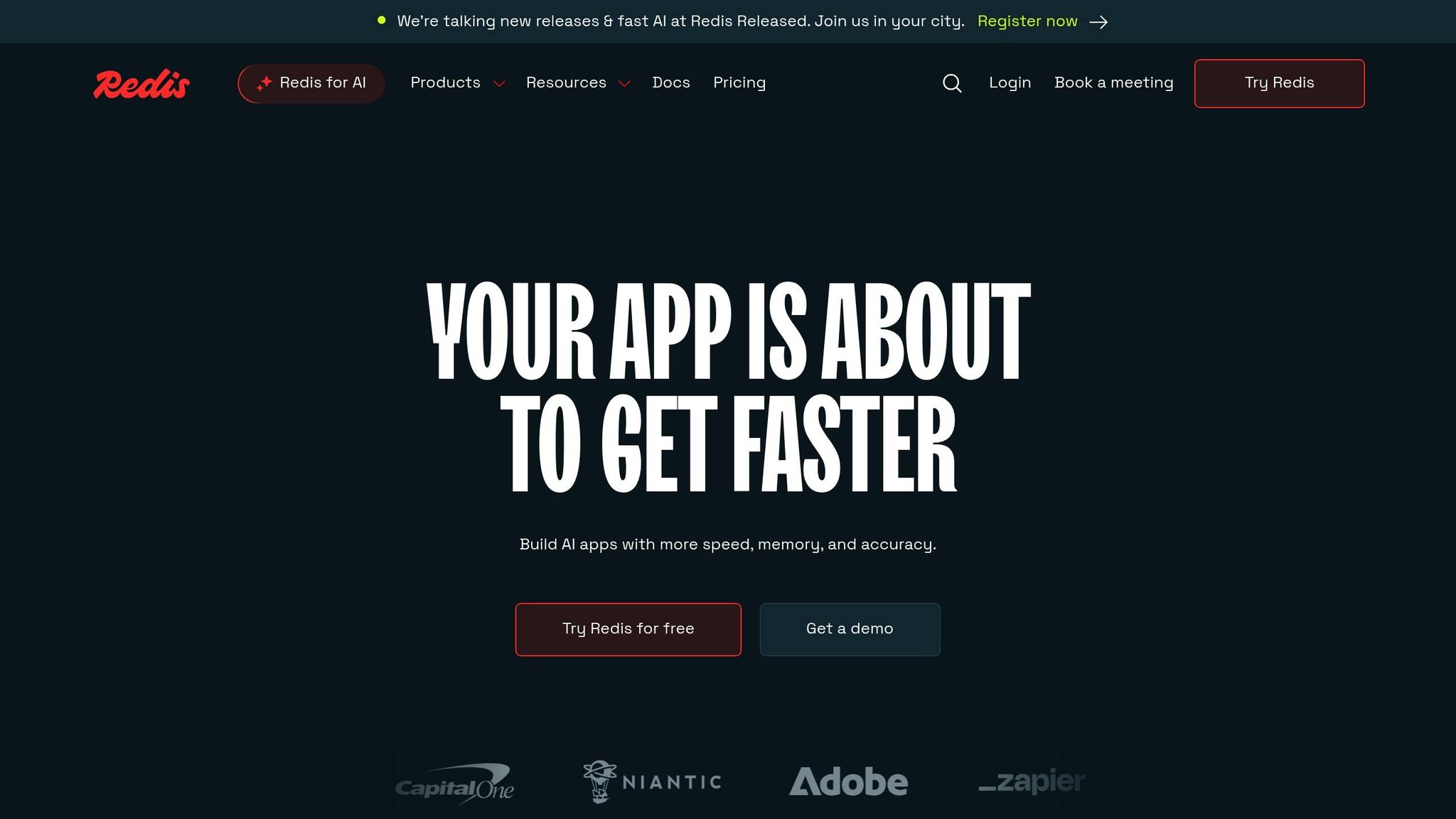
Azure Cache for Redis takes a multi-layered approach to protect your data, securing it both while in motion and when stored. By default, encryption at rest is handled using platform-managed keys (MMKs).
For organisations needing more control - particularly for compliance or regulatory needs - customer-managed keys (CMK) are available in the Enterprise tiers. These keys give you full oversight of encryption processes.
"Azure Cache for Redis automatically encrypts Enterprise Redis cache cluster data at rest. The encryption protects your data and assists in fulfilling your organisation's security and compliance requirements." - Trend Micro
The service also supports data persistence in Premium, Enterprise, and Enterprise Flash tiers, adding resilience by storing cache data on Azure Storage or managed disks. Azure Storage encrypts persisted data using 256-bit AES encryption, which meets FIPS 140-2 standards.
The way data persistence is handled varies by tier:
- Premium tier: Streams data directly to Azure Storage.
- Enterprise tiers: Uses managed disks for data persistence.
| Tier | Microsoft Managed Keys (MMK) | Customer Managed Keys (CMK) |
|---|---|---|
| Basic, Standard, Premium | Yes | No |
| Enterprise, Enterprise Flash | Yes | Yes |
However, keep in mind that data stored in Redis server memory is not encrypted by default. If encryption is needed at this level, it must be implemented within your application before writing to the cache.
Lastly, be cautious when switching between MMK and CMK on an existing cache instance. This process involves a lengthy maintenance operation, making it unsuitable for production environments. To avoid disruptions, plan your encryption strategy during the initial setup.
Access Control and Network Security
Access control plays a key role in safeguarding Azure Cache for Redis. Even if credentials are compromised, network-level protections can block unauthorised access.
Using Virtual Networks for Better Isolation
In addition to encryption, isolating your cache within a virtual network (VNet) strengthens its security. When Azure Cache for Redis is deployed inside a VNet, it becomes inaccessible from the public internet. Only virtual machines and applications within the same network can interact with it, reducing the risk of external attackers locating your cache through internet scans.
For Premium-tier instances, VNet injection is an option. This requires placing the cache in a dedicated subnet, which should only contain Azure Cache for Redis instances. This setup ensures predictable and secure traffic patterns. However, Microsoft now generally recommends Azure Private Link over VNet injection. Azure Private Link secures communication by keeping data off the public internet and simplifies network architecture. It is available across all service tiers - Basic, Standard, Premium, Enterprise, and Enterprise Flash - and supports Azure Policy while simplifying Network Security Group (NSG) rule management. If your subscription uses Azure Lighthouse, VNet injection is not supported, so Private Link becomes the go-to option.
Additionally, make sure DNS settings resolve all necessary endpoints correctly.
Setting Up Network Security Groups and Firewall Rules
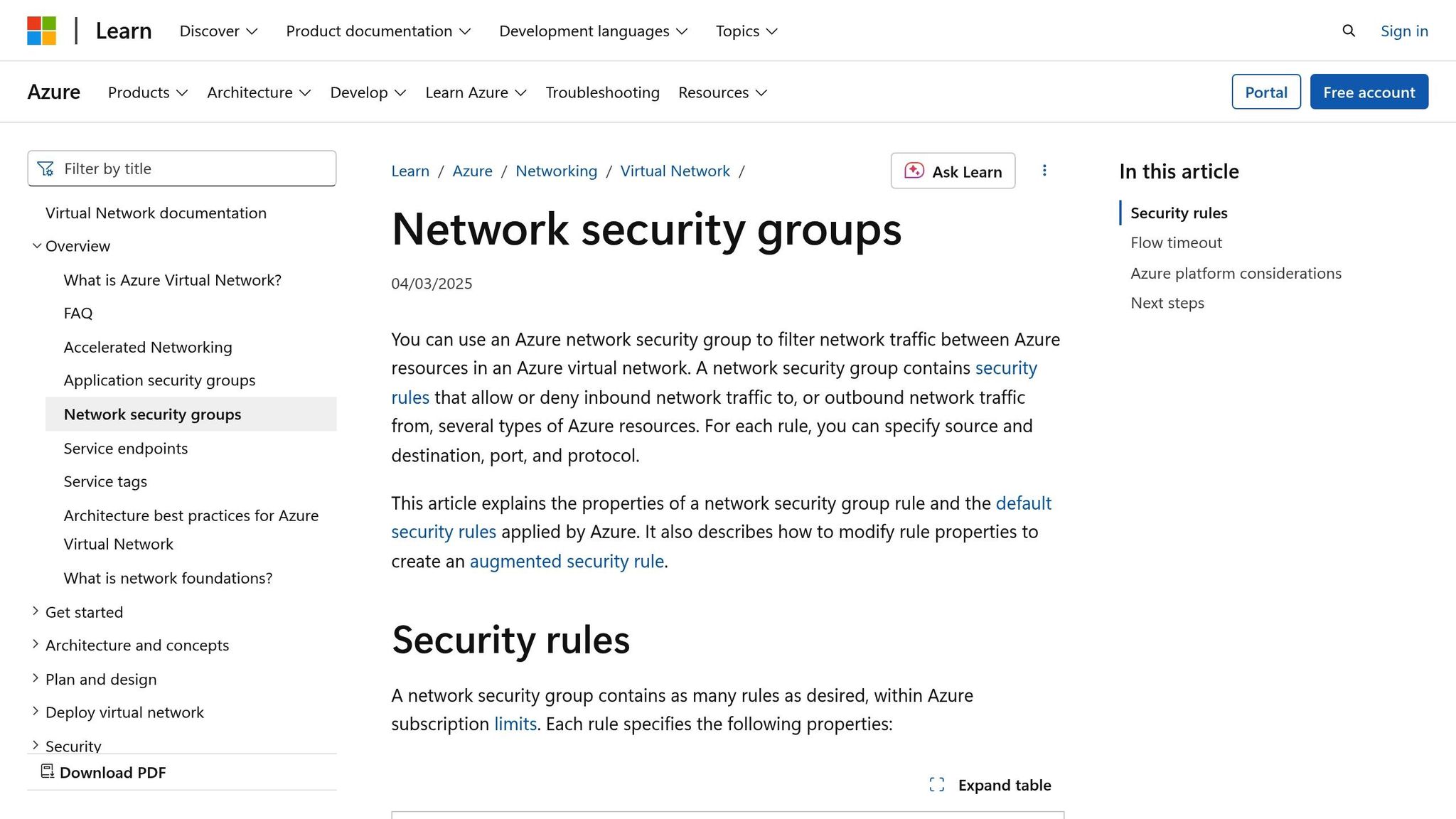
Network Security Groups (NSGs) act as a firewall by filtering traffic based on criteria like source IP, destination port, and protocol. When combined with VNet integration, NSGs can limit access to authorised application servers or management networks, reducing the risk of unauthorised access.
Azure Cache for Redis relies on specific ports for its functionality. When configuring NSG rules, ensure these essential ports are allowed:
| Ports | Purpose | Required For |
|---|---|---|
| 6379, 6380 | Client communication to Redis | All client connections |
| 8443 | Internal Redis communications | Cluster operations |
| 10221-10231 | Redis Clusters client communication | Clustered deployments |
| 13000-13999 | Redis Clusters with load balancing | High-availability setups |
| 15000-15999 | Geo-replication and clustering | Multi-region deployments |
After making changes to port configurations, reboot the cache nodes to apply the updates.
Firewall rules provide another layer of security by defining which IP address ranges can access your cache. These rules are available for Basic, Standard, and Premium tiers, while Enterprise tiers use alternative security mechanisms. When setting up firewall rules, limit public IP ranges as much as possible by specifying only the exact addresses that need access. Avoid broad IP ranges to minimise exposure.
It’s worth noting that Azure’s monitoring systems are always allowed to connect, regardless of your firewall settings. This ensures that health checks and diagnostics can run uninterrupted. Even if you enable private endpoints with public access, firewall rules still apply.
Regularly reviewing and updating your NSG and firewall rules is crucial as your infrastructure changes. Implementing a change management process - where each rule’s purpose and origin are documented - can help maintain effective access controls. By combining VNet isolation, NSGs, and precise firewall rule configurations, you create a robust, multi-layered defence for your Azure Cache for Redis.
Authentication and Authorisation
Securing Azure Cache for Redis relies heavily on robust authentication and authorisation practices. These mechanisms determine who can access your cache and what actions they’re permitted to perform.
Using Azure-Managed Identities or Access Keys
Azure Cache for Redis supports authentication through access keys and Microsoft Entra ID, offering a password-free approach that integrates seamlessly with Microsoft Entra ID. This method enables role-based access control (RBAC) without relying on shared access keys. When using Microsoft Entra authentication, ensure client applications refresh tokens before they expire and send the AUTH command to the Redis server. The Microsoft Authentication Library (MSAL) simplifies token acquisition, allowing you to use the Object ID of your managed identity or service principal as the username, with the token serving as the password.
Here’s a list of supported client libraries and their availability for Microsoft Entra authentication:
| Client Library | Language | Availability |
|---|---|---|
| StackExchange.Redis | .NET | Available with sample code |
| go-redis | Go | Available with sample code |
| redis-py | Python | Available with sample code |
| Jedis | Java | Available with sample code |
| Lettuce | Java | Available with sample code |
| Redisson | Java | Available with sample code |
| ioredis | Node.js | Available with sample code |
| node-redis | Node.js | Available with sample code |
Azure-managed identities take this a step further by enabling Azure Cache for Redis to authenticate with other Azure services without the need to manage explicit credentials. Both system-assigned and user-assigned managed identities are supported, giving you flexibility in your authentication setup.
Keep in mind that switching to Microsoft Entra authentication will immediately disable any existing access key connections. To avoid disruptions, implement robust retry mechanisms in your client applications. Tokens should be refreshed at least three minutes before they expire, and retry logic should be in place to handle potential failures. Also, note that Microsoft Entra authentication requires SSL connections and supports only TLS 1.2 or higher.
Implementing these measures lays the groundwork for monitoring access activities effectively.
Monitoring Authentication Activity
Keeping a close eye on authentication activity is essential for identifying who is accessing your cache and detecting any unusual behaviour. Azure Cache for Redis includes connection logs specifically designed for security auditing. To enable this, activate the "Connection Logs" option in the Azure diagnostic settings. For Basic, Standard, and Premium tiers, these logs poll client connections by IP address every 10 seconds .
You can route these logs to Azure Monitor Logs for deeper analysis. Using Kusto Query Language (KQL), you can examine authentication requests, failed attempts, and connection trends. The ConnectionEvents log category provides details such as timestamps, client IPs, connection IDs, and event types (e.g., new_conn, auth, close_conn).
To stay ahead of potential issues, configure Azure Monitor alerts to notify you of unusual authentication events. Regularly reviewing these logs helps you establish a baseline for normal access patterns. This is critical for investigating security incidents and ensuring that your Microsoft Entra authentication setup is functioning properly across all client applications.
Monitoring, Compliance, and Policy Enforcement
Keeping Azure Cache for Redis secure involves more than just setting up initial safeguards - it requires ongoing monitoring and enforcing strong security policies. By combining Azure's monitoring tools with policy-based controls, you can strengthen your security posture and quickly address potential vulnerabilities.
Using Microsoft Defender for Cloud
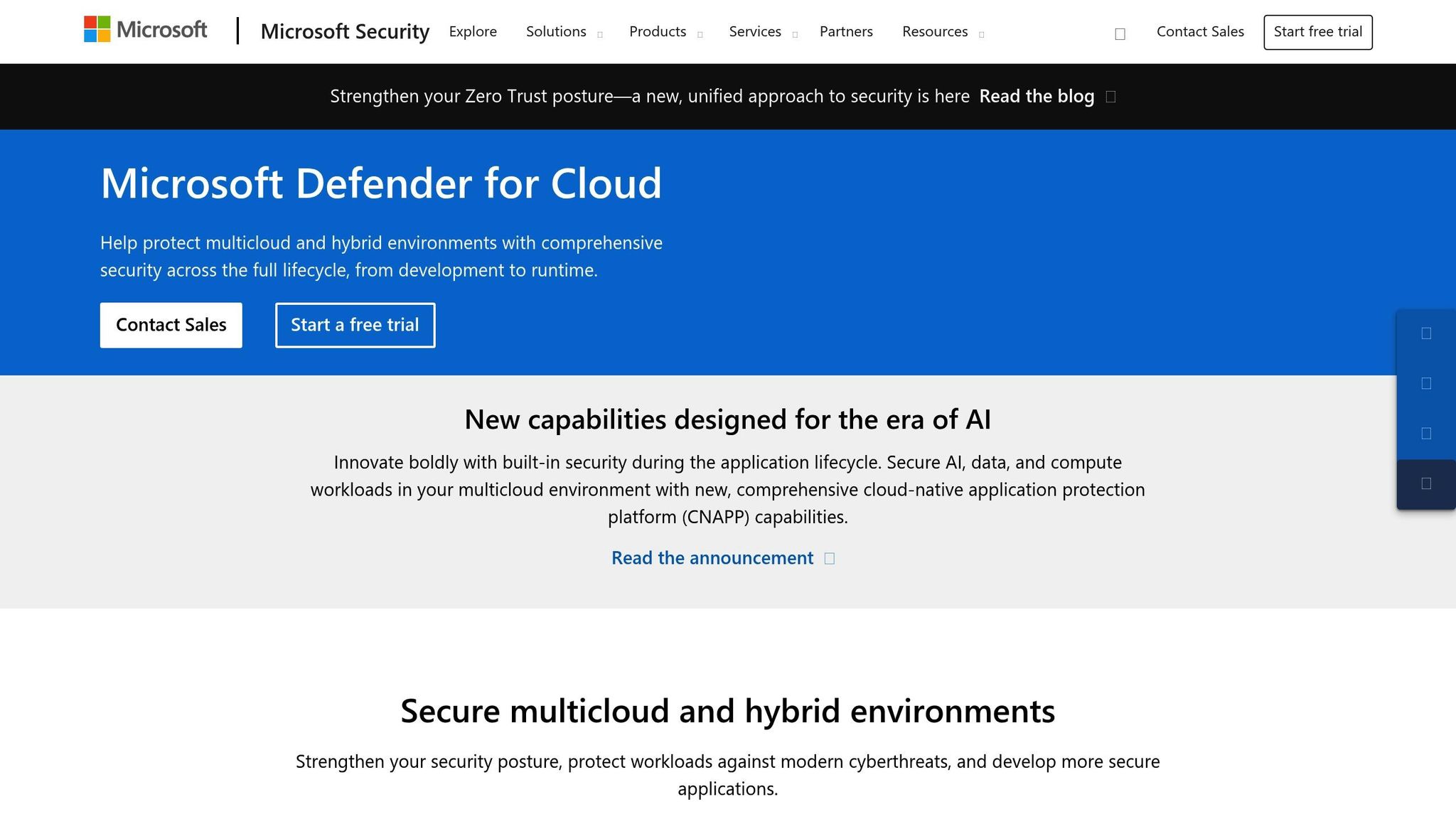
Microsoft Defender for Cloud serves as a key tool for monitoring security across your Azure Cache for Redis instances.
"Microsoft Defender for Cloud is a cloud security solution whose major role is to provide visibility and protection to an organization's cloud environment".
This platform evaluates your workloads and offers actionable recommendations to close any security gaps. For Azure Cache for Redis, it ensures compliance with specific policy definitions, such as enforcing SSL-only connections and using private links, through its Regulatory Compliance section.
Defender for Cloud works alongside Azure Monitor to deliver near real-time insights, collecting metrics about twice per minute. To make the most of these tools, configure alerts for critical metrics that could signal security issues or performance problems. Keep an eye on high server load, spikes in network bandwidth, and 99th percentile latency - these often indicate potential breaches or reliability concerns.
| Alert Type | Condition | Description |
|---|---|---|
| Metric | 99th percentile latency | Tracks the worst-case latency of server-side commands using PING commands to monitor cache health. |
| Metric | High server load usage/spikes | Indicates the Redis server is under strain, potentially causing timeouts or slower responses. |
| Metric | High network bandwidth usage | Excessive bandwidth usage may delay data delivery to clients, leading to timeouts. |
Once monitoring is in place, use Azure Policies to enforce consistent security configurations across your resources.
Setting Up Azure Policies for Security Enforcement
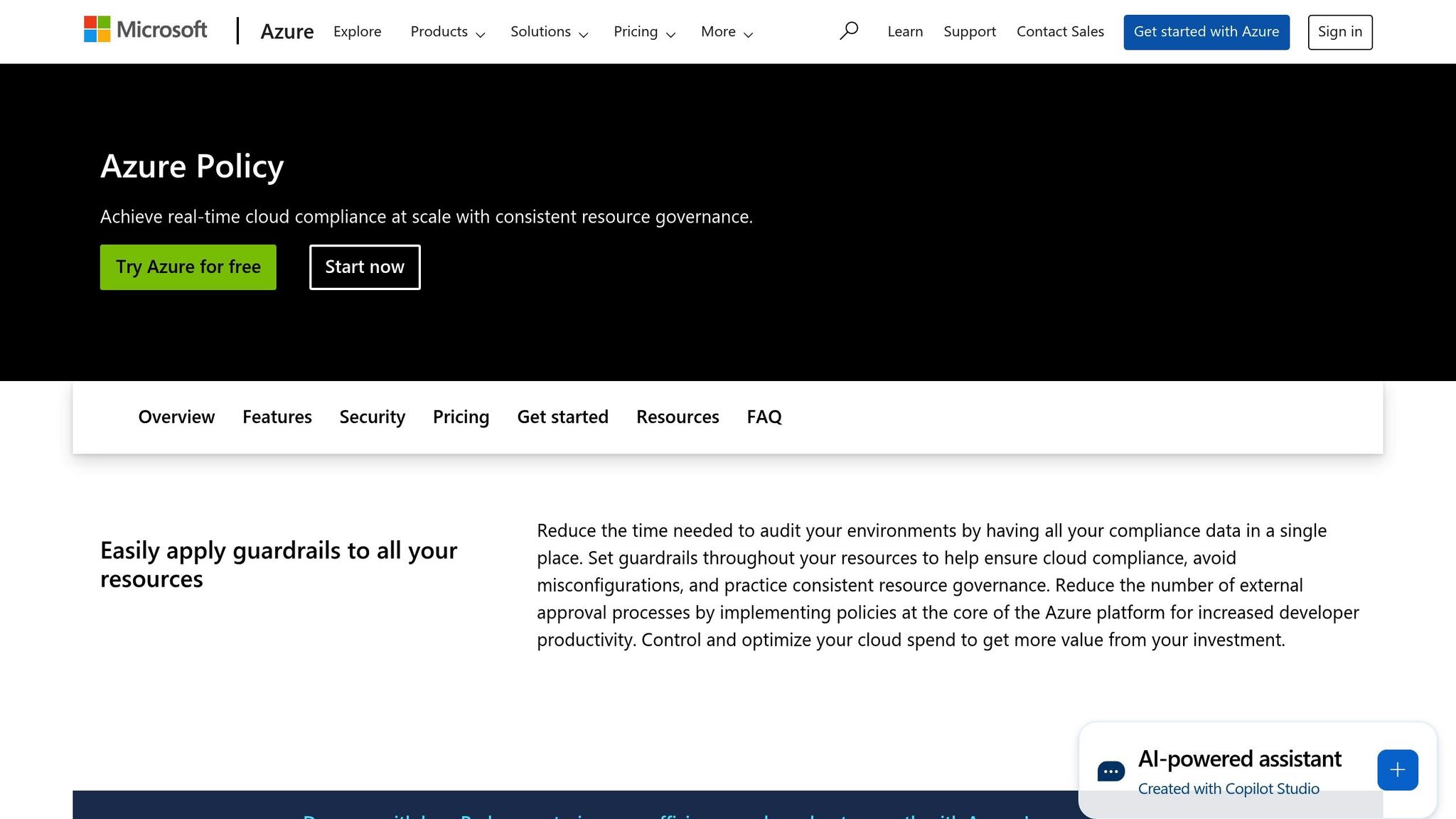
Azure Policies are essential for automatically auditing and enforcing security measures on your Azure Cache for Redis instances. Instead of relying on manual checks, these policies ensure compliance with critical security requirements like SSL usage and network isolation.
One key policy is "Only secure connections to your Azure Cache for Redis should be enabled", which mandates SSL connections to protect data in transit from risks such as man-in-the-middle attacks and session hijacking. This policy can be set to Audit, Deny, or Disabled, depending on whether you want to monitor compliance or actively block non-compliant setups.
Another important policy is "Azure Cache for Redis should use private link", which enforces the use of private endpoints instead of public IPs. This reduces the risk of data exposure by keeping traffic confined to your virtual network.
Azure Policies also integrate with Azure Monitor, allowing you to configure alerts that notify you of any configuration issues or deviations.
Regular Security Assessments
Regular security reviews are crucial to maintaining compliance with standards and adapting to new threats. Monthly assessments can help ensure your Azure Cache for Redis setup remains secure. Analyse connection logs and authentication patterns for unusual access behaviour. These logs, available in the Basic, Standard, and Premium tiers, can be routed to Azure Monitor Logs for deeper analysis using Kusto Query Language (KQL).
Key areas to focus on during assessments include encryption, network isolation, and access control. Verify that all cache instances use TLS 1.2 or higher and confirm that private endpoints are correctly configured.
Document your findings and track any necessary fixes using Azure Monitor workbooks or dashboards. Additionally, review your Azure Policy compliance status through Microsoft Defender for Cloud. Pay special attention to recommendations regarding private link usage, SSL configurations, and access key management, as these are critical to maintaining a secure environment.
UK SMB Considerations
UK small and medium-sized businesses (SMBs) face unique challenges when it comes to managing data security and regulatory compliance. Beyond implementing robust security measures, they must tackle local regulations and data sovereignty requirements. Configuring Azure Cache for Redis to align with these mandates is crucial. The regulatory landscape in the UK is evolving, with a growing focus on keeping sensitive data within national borders while adhering to stringent data protection standards.
GDPR Compliance and Data Sovereignty
For UK SMBs, meeting GDPR obligations and addressing data sovereignty concerns are top priorities when using Azure Cache for Redis. One key factor is ensuring data residency. Azure provides the option to store and process customer data specifically within the UK, which is essential for maintaining compliance with local regulations.
This becomes even more critical for businesses in regulated sectors. The US Cloud Act, for instance, allows US authorities to access data stored overseas by US-based cloud providers, potentially bypassing local laws. This has sparked calls for greater transparency and more localised control over data.
"Data sovereignty is not a buzzword, it's survival." - Jon Cosson, Head of IT and Chief Information Security Officer at JM Finn
To remain GDPR-compliant, configure Azure Cache for Redis with encryption enabled by default. Use TLS encryption protocols that comply with FIPS 140-2 standards. Limit access through Role-Based Access Control (RBAC) and adopt a Zero Trust security model to further protect your environment.
Azure Policies can also help enforce security measures, ensuring data stays within UK borders and simplifying compliance efforts. Additionally, enabling diagnostic settings to monitor data flows in Azure Cache for Redis is essential for demonstrating compliance during audits.
Once data residency and GDPR requirements are under control, the focus shifts to implementing security practices tailored to the UK.
UK-Specific Security Practices
UK SMBs must also implement security practices that align with emerging local regulations. The UK's Data Use and Access (DUA) Bill, for example, requires a risk-based approach to international data transfers, ensuring the destination country’s data protection standards are not weaker than those in the UK.
It’s important to understand where your data is stored, how Microsoft’s UK datacentres operate, and the security measures in place. The Competition and Markets Authority (CMA) is currently investigating cloud market practices that could restrict customers to foreign providers, which may lead to regulatory reforms promoting data sovereignty.
To mitigate risks, consider adopting a multi-supplier strategy. While Azure Cache for Redis might be your primary solution, integrating it into a hybrid cloud environment can help balance performance needs with sovereignty requirements.
Regular risk assessments and compliance audits are crucial for maintaining security and data sovereignty. Verify that your cache instances use at least TLS 1.2 encryption and ensure private endpoints are correctly configured. Document these audits using UK date formats (DD/MM/YYYY) and record any compliance-related costs in pounds sterling (£).
For monitoring, configure dashboards to reflect UK standards - use Celsius for temperatures, kilometres for distances, and timestamps in GMT/BST. Set expiration values on cache keys to automatically remove data, supporting GDPR’s data minimisation principles and reducing the amount of personal data stored.
When planning your Azure Cache for Redis deployment, consider frameworks like ISO 27001, GDPR, and PCI DSS, which provide clear operational guidelines. However, keep in mind that regulations are shifting towards emphasising data sovereignty and security-by-design. Staying informed about these changes and adjusting your configurations accordingly will be key.
"We need coordinated efforts between government, industry and local authorities to build a resilient datacentre ecosystem. This means shared responsibility, clearer policy frameworks, and incentives for both hyperscalers and UK-based providers." - Luisa Cardani, TechUK
Conclusion
Protecting Azure Cache for Redis demands a multi-layered security strategy, combining several protective measures to safeguard your data and align with UK regulations.
Encryption remains a cornerstone of this strategy. By enabling TLS 1.2 or higher for data in transit and using Azure's built-in encryption for data at rest, you can ensure that sensitive information is protected - whether it's being transferred between your applications and the cache or stored within Azure's infrastructure.
Beyond encryption, robust access control measures are essential. Using virtual networks, private endpoints, and well-configured firewall rules creates secure boundaries around your cache instances. When paired with vigilant monitoring and timely assessments, these measures form a comprehensive security framework. Strong authentication processes further ensure that only authorised users and applications can access your data.
Maintaining security and compliance requires continuous oversight. Regular monitoring helps sustain protection over time, particularly for UK SMBs navigating GDPR and evolving data sovereignty requirements, as previously discussed.
As regulations around data sovereignty and localised control grow stricter, implementing these best practices now will not only secure your operations but also provide a solid foundation for future adaptability - all while maintaining the performance and scalability your business depends on.
Keep in mind, security isn’t a one-and-done task. Regular audits and policy updates are essential to keeping your Redis cache both secure and compliant as your business evolves.
FAQs
How does Azure Cache for Redis comply with UK regulations like GDPR?
Azure Cache for Redis aligns with GDPR requirements in the UK by ensuring secure SSL connections to protect data during transmission, applying strict access controls to limit unauthorised access, and providing data residency options to store information in UK-based data centres. These features support organisations in maintaining GDPR compliance while protecting sensitive data.
Why is Microsoft Entra ID a better choice than shared keys for authenticating Azure Cache for Redis?
Using Microsoft Entra ID for authentication instead of shared keys brings several benefits. For starters, it improves security by removing the reliance on passwords. Plus, with role-based access control (RBAC), you can assign permissions with greater precision, lowering the chances of unauthorised access or accidental key exposure.
On top of that, Microsoft Entra ID integrates smoothly with Azure's identity services, streamlining the process of managing users and permissions, even at a large scale. This approach offers a safer, more scalable, and efficient solution for managing authentication in your Azure Cache for Redis instances.
How do Azure Policies help enhance security and ensure compliance for Azure Cache for Redis?
Azure Policies are essential for keeping your Azure Cache for Redis instances secure and compliant. They let you set and enforce rules across your resources, ensuring everything aligns with your organisation’s security and governance requirements.
With Azure Policies, you can automate compliance checks, block unauthorised configurations, and enforce practices like enabling TLS encryption or restricting public network access. This not only minimises human error but also ensures consistent security across your setup, making it easier to scale your solutions confidently.
